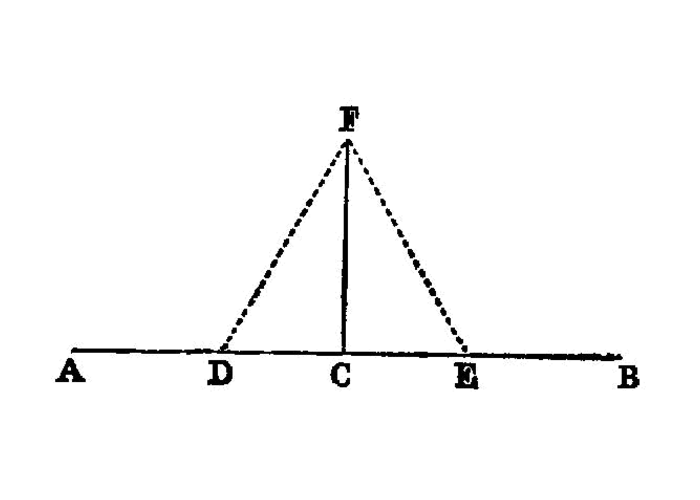Proposition I.11

To draw a straight line at right angles to a given straight line from a given point on it.
Let AB be the given straight line, and C the given point on it.
Thus it is required to draw from the point C a straight line at right angles to the straight line AB.
Let a point D be taken at random on AC; 1 let CE be made equal to CD; I.3 on DE let the equilateral triangle FDE be constructed, I.1 and let FC be joined;
I say that the straight line FC has been drawn at right angles to the given straight line AB from C the given point on it.
For, since DC is equal to CE, and CF is common,
- the two sides
DC,CFare equal to the two sidesEC,CFrespectively;
and the base DF is equal to the base FE;
-
therefore the angle
DCFis equal to the angleECF; I.8and they are adjacent angles.
But, when a straight line set up on a straight line makes the adjacent angles equal to one another, each of the equal angles is right; I.def.10
- therefore each of the angles
DCF,FCEis right.
Therefore the straight line CF has been drawn at right angles to the given straight line AB from the given point C on it.
- Q. E. F.
References
Footnotes
-
let CE be made equal to CD.
The verb isκείσθω which, as well as the other parts ofκεῖμαι , is constantly used for the passive ofτίθημι to place
; and the latter word is constantly used in the sense of making, e.g., one straight line equal to another straight line. ↩
